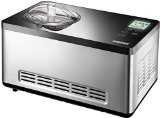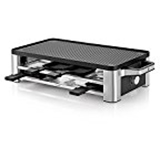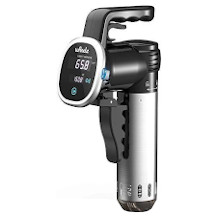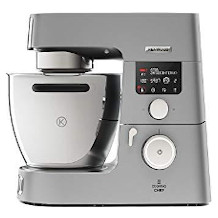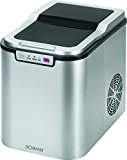Kettle purchasing advice: how to choose the right product
- What you need to know
- Kettles heat water quickly and efficiently.
- The speed with which a kettle heats water depends on its wattage.
- Kettles come in a range of different designs and materials like plastic, glass, and stainless steel.
- Some models have a thermometer which lets you choose how hot you want your water.
- Safety features like insulated handles and overheating protection are essential.
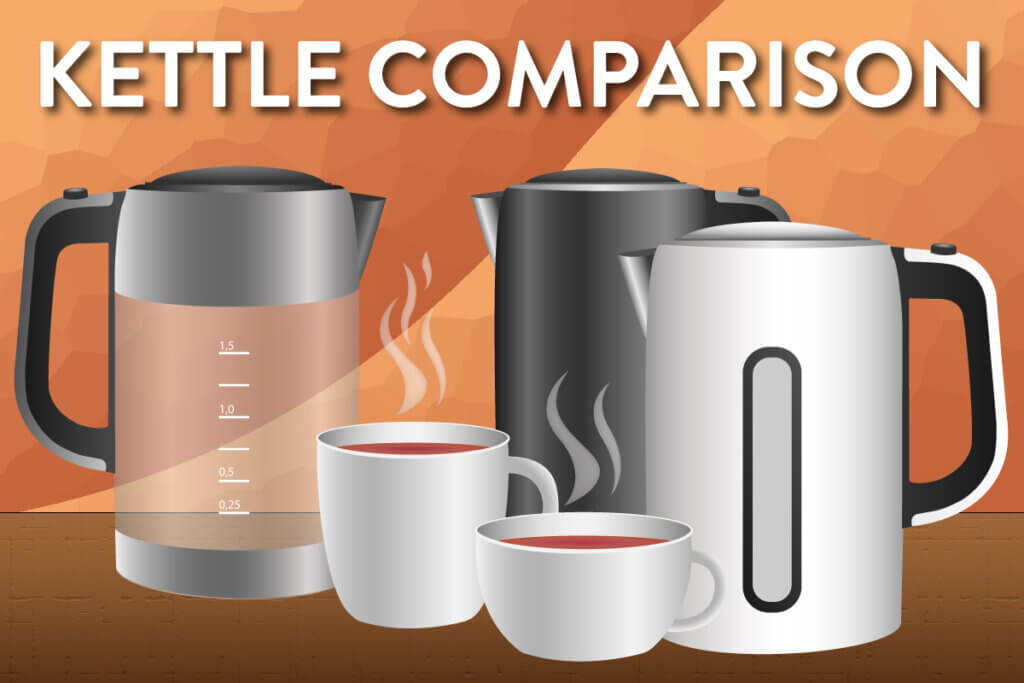
A home essential
Kettles are an integral part of any home. After all, whether it be tea or coffee, everybody loves a hot drink. In the past, stovetop whistling kettles were extremely common, but nowadays most people use electric ones. This is because they are so easy to use – just fill it up and press a button!
The two main advantages of heating water by a kettle are time and energy. Kettles are significantly faster and more energy efficient at heating water compared to a cooktop. On average, a kettle uses 50% less energy than a cooker when heating water – except for induction stoves, which are extremely efficient but also very expensive. Kettles are also extremely cheap: you can get one for under $20.
Bases and heating elements
No matter the design, all electric kettles have a base and a container with a heating element.
Base
Electric kettles have a base which is responsible for power supply. You plug the base into a socket, which powers an integrated plug that the kettle itself sits on. Some models have this plug on the side, which means you can only put the kettle on in one position. Others have it in the center, which means you can put it on in any position – these are often referred to as 360° swivel bases.
Heating element
Kettles either have an integrated or an exposed heating element. Most modern models have an integrated heating element, which means that the bottom of the kettle jug functions a bit like a stovetop. Exposed heating elements are directly in contact with the water. This has a few disadvantages, which is why they aren’t that common nowadays. First and foremost, exposed heating elements are especially prone to limestone build-up, which is quite expensive and time consuming to de-calcify. They also need to be submerged in water to work, so you can’t make a small amount of hot water. Another disadvantage is that they are much less energy-efficient – worse for the environment and your wallet.
While kettles with integrated heating elements also get a build-up of limescale over time, they are quite easy to clean. The surface area between water and heater is large, which means that they are quick and efficient. The main disadvantage though is that they are quite loud, similar to the sound of a boiling pot on a stove. You can get kettles that are designed to be quiet, but these often take quite a long time to boil water.
Kettle materials and designs
Nowadays, most kettles have integrated heating elements, so the best way to categorize them is by differences in design and material. While different materials have a strong influence on the styling and aesthetic of a kettle, they also have different properties which can affect performance and handling.
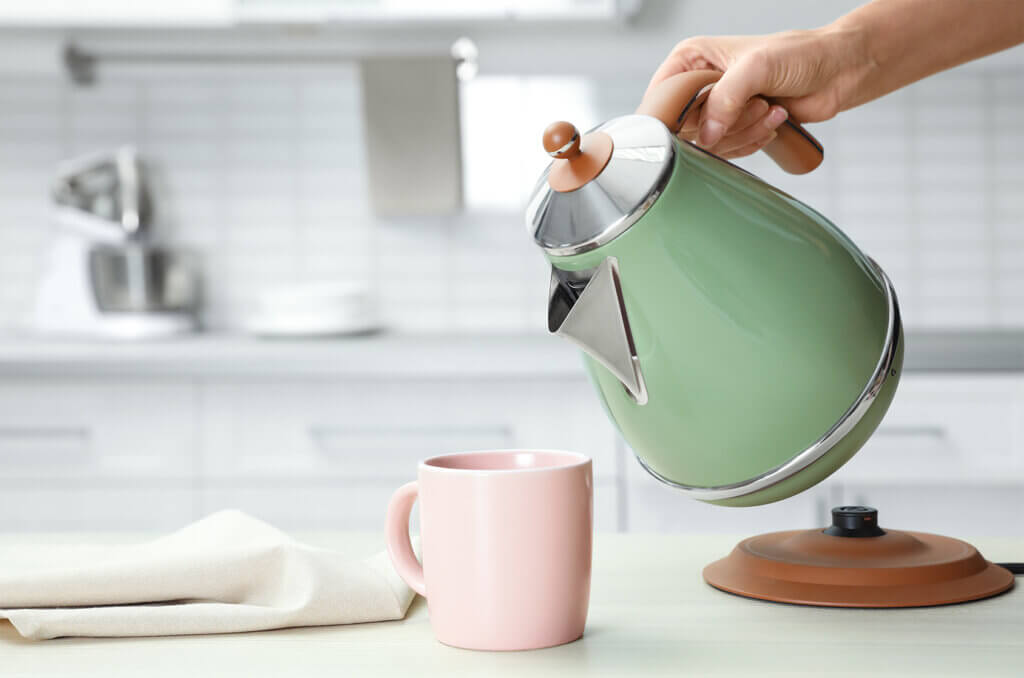
Plastic
Plastic kettles are the cheapest type available on the market. They are relatively durable and have good thermal isolation: the water stays warm while the handle doesn’t get too hot. This all sounds great, but they do have some big negatives. Plastic is harmful to the environment and prone to discoloring in the sun. Most importantly though, it can also leach into the water as it is being boiled. Not only can this change the taste of the water, it is also extremely harmful to your body. The most harmful of these plastics are PAHs (polycyclic aromatic hydrocarbons), phthalates (plasticizers), and BPA (bisphenol A). If you do choose a plastic kettle, make sure it is BPA-free.
Stainless steel
Stainless steel is extremely good at conducting heat, which makes it an ideal material for heating lots of water. The flipside is that the outside of the kettle also gets hot if it isn’t insulated. This is bad as you can burn yourself on the kettle, and it also means that the kettle isn’t very efficient at storing heat. While the handle should be made from something that is thermally insulated, never touch the metal parts of the kettle when hot.
Compared to plastic, stainless steel is very safe when it comes to leaching. It has a non-oxidizing neutral surface, which means nothing ends up in your water. It also doesn’t affect the flavor of the water in any way. Steel is also more durable than plastic – your kettle will be able to withstand a few bumps and scrapes.
All that glitters is not stainless steel
When choosing your kettle, make sure that it is actually made from stainless steel. Some kettles have steel outer cases but have an inner chamber made from plastic. A lot of models might also be made from steel but then have a plastic lid or limescale filter.
Stainless steel kettles aren’t just good for their durability, they look fabulous too. You can get models in a huge variety of styles. Chrome or aluminum, gloss or matt, brushed or lacquered – there’s a type of stainless steel that will look the part in your kitchen. Since you can’t see inside them, it also means you don’t see the limescale deposits like you do on glass kettles which can be a bit of an eyesore. The one disadvantage is that shiny metal picks up a lot of fingerprints. This said, stainless steel is easy to clean. Also, you won’t be touching the hot surface of the kettle too much to begin with.
Glass
Glass kettles are increasingly popular, and for good reason. You can see the water boiling inside them, and a lot of models have cool LEDs which light up during heating. Being able to see inside is also great for knowing exactly how much water there is.
Just like stainless steel, glass doesn’t leach any harmful substances into water. Likewise, it doesn’t affect the taste of the water. While limescale does build up, since glass is non-porous, it doesn’t stick as much which means it is easy to de-calcify.
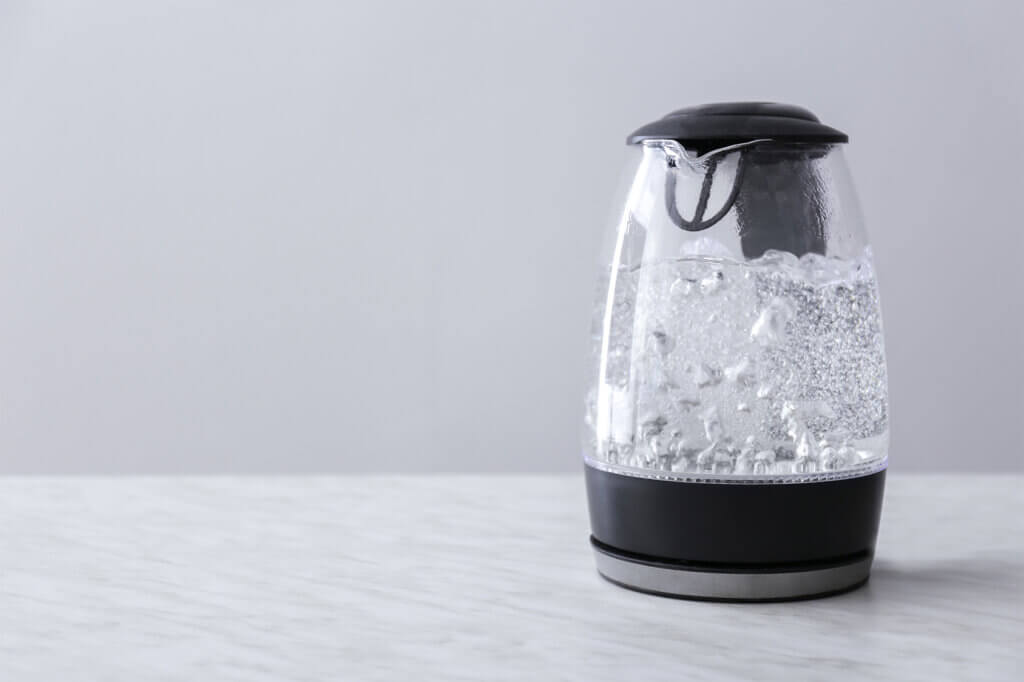
Being able to see the water boil is cool, but it also means you can see the limescale. You might find yourself wanting to de-calcify your kettle more often than with an opaque steel or plastic model. The type of glass used in kettles is heat resistant and shockproof, but it isn’t shatter resistant so one accident can irreparably break it.
Stylish kettles
Some kettles have stylish retro designs which can add a bit of nostalgic flair to your kitchen. While they look old, they are fitted with the latest technology. They come in a range of different colors such as red, green, blue, and cream. You can also get exciting futuristic designs made from steel and glass. A lot of manufacturers will offer a range of kitchen machines in similar styles, so you can have a matching kitchen.
Travel kettles
Travel kettles are a small lightweight option for when you’re on the road. They’re also great if you don’t have much space at home or in the office. They are designed to be light, so they are mostly made from plastic.
Since they’re so compact, they can’t boil that much water in one go – usually no more than a couple of cups. They need to be plugged into a mains socket, so make sure you can find one when camping. You can also get models that can be plugged into a car cigarette lighter.
Special forms
Hot water dispensers are a style of kettle specifically designed for coffee lovers. They dispense hot water at the touch of a button thanks to an instant heating system. You can often set different temperatures and portion sizes on them.
Gooseneck kettles are a style also popular with coffee aficionados. They have a long spout which, as their name suggests, resembles a goose’s neck. This makes pouring very easy, especially if you’re making filter coffee.
There are also kettles with integrated tea strainers. These let you prepare loose leaf tea directly in the kettle without needing to use an extra sieve.
Buying tips
Since most kettles are pretty energy efficient, a lot of people mainly choose a model based on design and looks. However, there are actually a few other factors you should consider when making a purchase.
Power and speed
Modern kettles have a power output of between 600 and 3000W — most models sit between 2000 and 2400W. Kettles with a lower output use less power, but take longer to heat. In other words, the higher the power, the shorter the time it takes to boil water.
If you get a kettle with a large capacity, make sure it is powerful enough. Most kettles take about four minutes to boil, but remember that this depends on how much water is in them. For example, a 2200-watt one will take roughly three minutes to boil a quart (1L) of water. Power also isn’t everything, having a kettle made from a thermally insulated material also reduces boiling time.
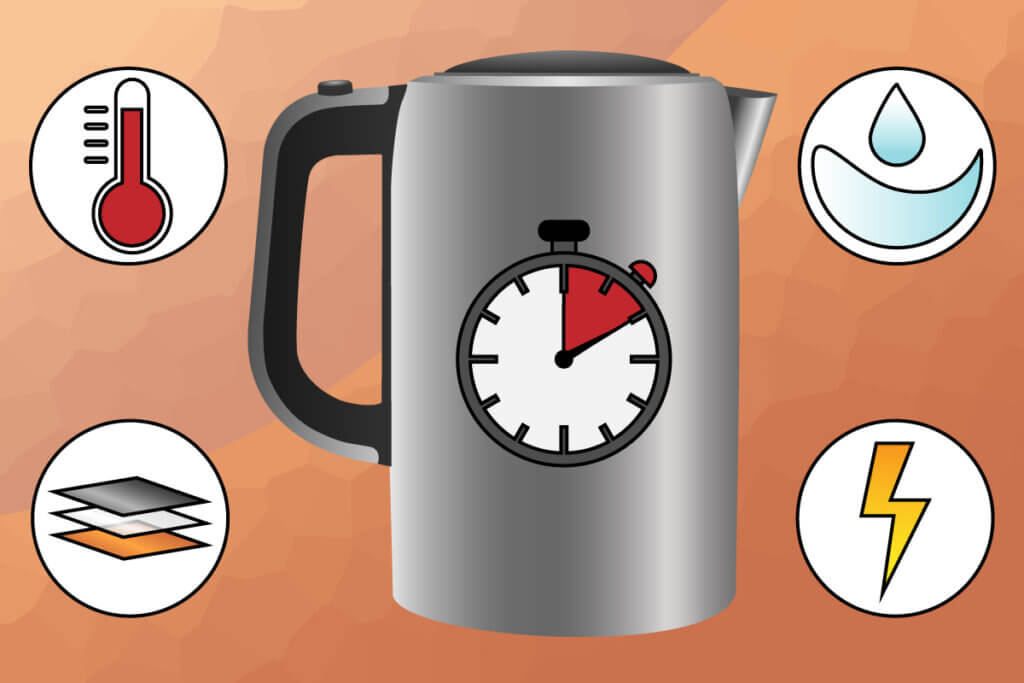
Limescale filter
Most kettles come with a removable filter to strain out any limescale deposits. These are usually made from plastic, but you can get ones made from stainless steel.
Safety
Hot water and electricity can be dangerous, so modern kettles are fitted with a few important safety mechanisms. These are designed to prevent fires and let you leave your kettle boiling unattended.
Automatic shut-off prevents the kettle from continuing to heat the water once it has already boiled. This prevents any accidents and also saves on energy. Most models will have an alert sound or a clicking noise to indicate that the water is ready.
Dry boil protection prevents the kettle from overheating. It senses when the amount of water is too low and switches the heating element off. This is a useful feature in case the automatic shut-off is defective and the water keeps on boiling until it is all evaporated. Likewise, if the heating element is on and there is no water, it can damage the kettle. This is especially important with plastic kettles as they can melt.
Always check for a safety seal when buying a kettle. The following list details some further safety pointers you should look out for on a kettle:
- The kettle must have a secure base to ensure it doesn’t tip over.
- Anti-slip feet on the base to prevent the kettle from slipping off the kitchen worktop.
- Markings for the minimum and maximum fill quantity indicate how much water you can put in it.
- All areas that you might touch need to be insulated. This includes the handle of the kettle and, ideally, the container. Many models have a thermally insulated handle, which does not heat up during the boiling process and thus prevents possible burns.
- A safety lid serves as a splash guard. It should open easily and evenly, but never burst open, as this could cause hot water to splash.
- With a lid lock, the kettle can only be opened by pressing a button. This prevents the lid from opening by itself when you are pouring water out of it.
- An indicator light or a signal tone lets users know directly whether the kettle is switched on.
- Automatic switch-off ensures that the kettle switches off automatically as soon as the container is removed from the base.
- A manual switch-off option (usually an on/off button) gives you the option to stop the boiling process prematurely.
Caution: steam
When opening the lid, make sure to keep your hands and face well away, as you can get a steam burn from the hot water.
Temperature control
Simple kettles usually only have an on/off switch, but some higher-priced models give you the option to set how hot you want your water to be. Water temperature can have a significant effect on the taste of tea and coffee. Moreover, being able to set the temperature can reduce your energy costs as well as the need to wait for the water to cool down. While it is a useful feature, it isn’t essential so don’t worry if you don’t want to spend the extra money.
Ideal tea brewing temperature
There are different ideal temperatures for brewing tea. These depend on the type:
Green tea: 149-176 °F (65-80 °C)
White tea: 176-185 °F (80-85 °C)
Yellow tea: 194 °F (90 °C)
Black tea: 204.8 °F (96 °C)
Red tea: 204.8 °F (96 °C)
Extra features
While some additional features can improve your quality of life, others are really just gimmicks. Useful features include a level indicator, keep-warm function, and LED lighting. Less useful is something like Wi-Fi connectivity.
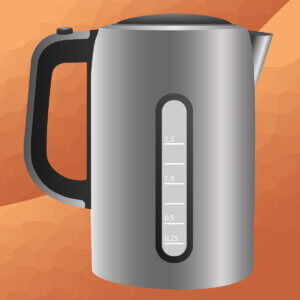
Level indicator
Level indicators show how much water is in your kettle. Good ones are easy to read from both sides of the kettle, and are relatively precise.
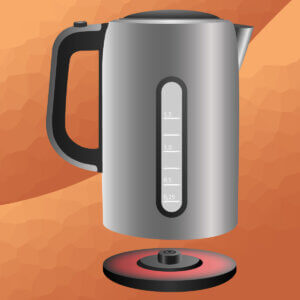
Keep-warm function
Some kettles are fitted with a hot plate which can keep your water warm for a while after it has been boiled. This is great if you’re a big tea drinker, and don’t want to have to boil the kettle fresh each time. Most models with this feature can keep water warm for up to 30 minutes.
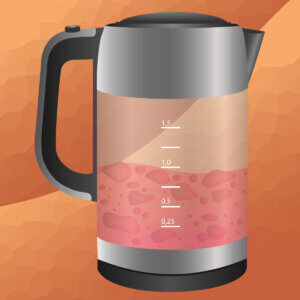
LED lighting
LED lights are most commonly found on glass kettles. They are an easy way to show if the kettle is boiling or not, and also look great. Some even change color depending on the temperature of the water.
Pricing
When choosing a kettle, you will come across a huge range of brands, styles, and prices. The cheapest models start at under $10, but don’t expect anything special at this price point. Performance does improve with price, but only to a point.
Good kettles don’t need to be extremely expensive. You can get a decent one with all the most useful features for around $20. Mid-range models that cost between $30 and $50 usually have a temperature controller and a 360° swivel base. Stainless steel kettles with a lot of features can run you between $50 and $100. Expect to pay three digits for high-quality kettles with distinctive designs.
Descaling
Modern kettles with integrated heating elements don’t require much maintenance. The main thing you’ll have to do is descale yours from time to time. Limescale impairs a kettle’s ability to heat water – if you descale yours regularly, it will use up to 30% less energy. How often you need to do this depends on the hardness of the water in your area, but as a rule if you can see limescale building up on the bottom of the container, it’s time.
The easiest way to descale a kettle is using a special limescale remover made from citric acid or vinegar. These are available in most supermarkets and homeware stores. They can come in tablet, powder, granule, or liquid form. The advantage of using these is that they are pre-portioned, so all you need to do is put them in, boil the kettle, and rinse it out.
There are also natural ways of descaling a kettle. You can use vinegar or lemon juice, but you’ll have to leave it to soak for a few hours before boiling it. Vinegar is the most effective home remedy for a calcified kettle and needs to be used as follows:
- Fill the container with vinegar and water in a 1:1 ratio so that the bottom is completely covered.
- Leave the mixture to soak for about one to two hours.
- Bring the water to a boil.
- Empty the kettle and refill it with tap water.
- Bring the water to the boil again.
- Empty the water – the kettle should now be clean and ready for use again.
Image 1: © FinalCheck | Image 2: © New Africa / stock.adobe.com | Image 3: © Pixel-Shot / stock.adobe.com | Images 4-7: © FinalCheck

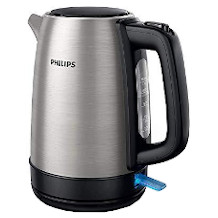
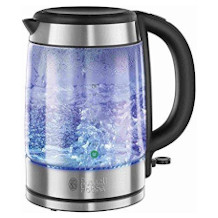
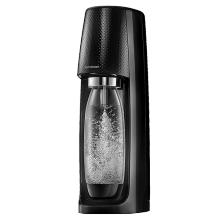
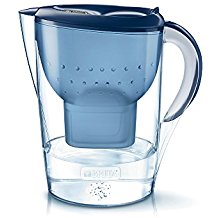
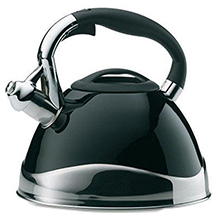
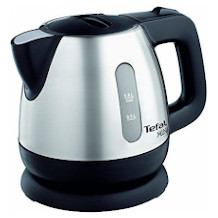
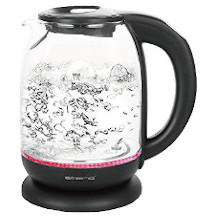
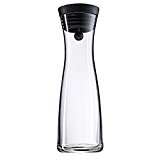

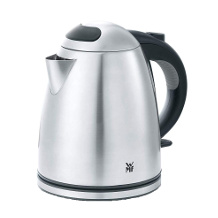
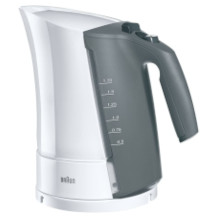
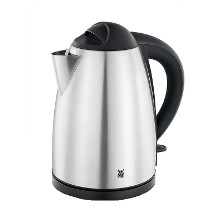
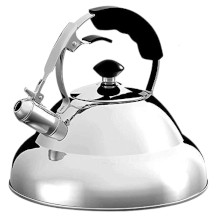
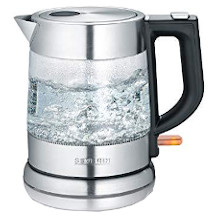
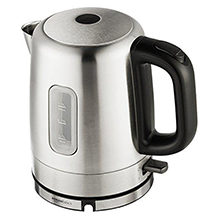
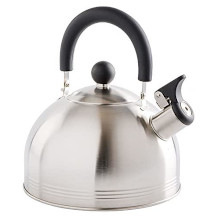
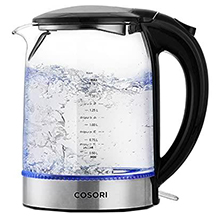


 21,719 reviews
21,719 reviews
